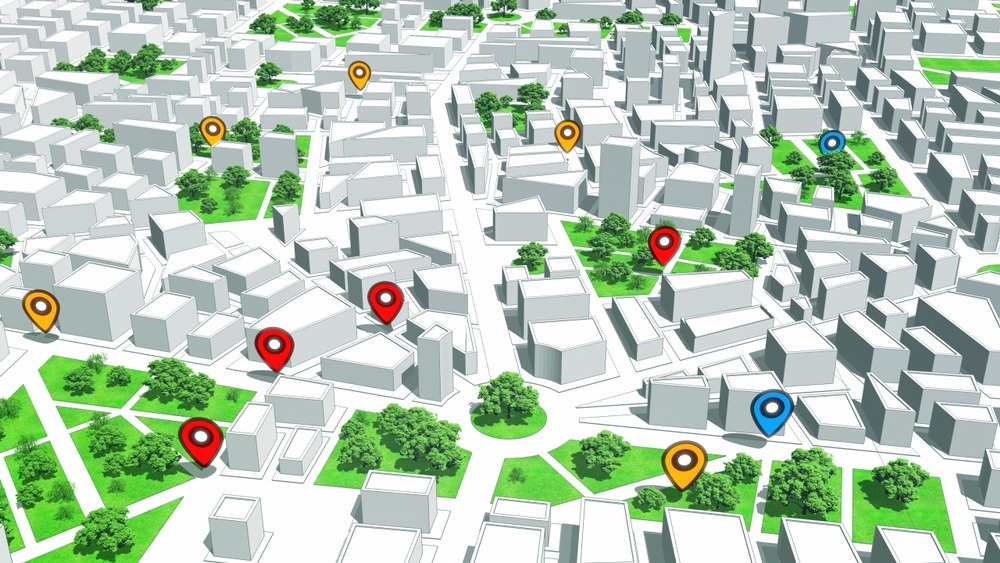Missouri Marketing Resource Blog

Geotargeting in Digital Ads: Reaching the Right Audience at the Right Time

Have you ever been scrolling on your phone, trying to decide what to eat for dinner, and an ad pops up for a restaurant just down the street? That’s not a coincidence; it's geotargeting in action. Even as our lives become more digital, where we are in the real world still matters immensely, especially for local businesses.
Geotargeting advertising allows businesses to deliver personalized messages to the right people based on their physical location. It’s about connecting with potential customers when and where your message is most relevant to them. For local businesses, this isn't just a neat trick—it's a powerful way to drive real results, from foot traffic to sales. At Zimmer Communications, we specialize in helping businesses like yours leverage location-based marketing to reach the right local audience across multiple platforms, ensuring your message always hits home.
Key Takeaways
- What Geotargeting Is: Geotargeting uses location data (like GPS or IP addresses) to deliver digital ads to users in specific geographic areas.
- Why It's Powerful: Location adds context, making ads more relevant and increasing the likelihood of conversion. It helps local businesses compete effectively.
- How to Use It: Smart strategies include driving foot traffic, promoting events, targeting competitors' customers, and using weather-based messaging.
- Timing is Crucial: Combining geotargeting with time-based targeting allows you to reach people at the exact moment they are most likely to act.
- Omnichannel Integration: Geotargeting is most effective when part of a unified omnichannel marketing strategy that includes digital ads, radio, and social media.
What Is Geotargeting?
At its core, geotargeting is a form of digital ad targeting that uses location data to deliver content to users based on their geographic location. This data can come from several sources, including IP addresses (which can identify a user's city or region), Wi-Fi, and GPS signals from mobile devices (which offer much more precise location information).
This technology allows for several types of location-based marketing:
- Geofencing: This involves creating a virtual "fence" or boundary around a specific physical location, like your storefront, a competitor’s business, or a local event venue. When a user with a mobile device enters or exits this predefined area, it triggers an ad to be served to them. Geofencing ads are perfect for sending a timely offer to someone who is physically near your business.
- Radius Targeting: Similar to geofencing, radius targeting lets you draw a virtual circle around a central point—like your business address—and target everyone within that set distance (e.g., a 5-mile radius). This is a straightforward way to reach the most relevant local audience.
- Location-Based Audience Segments: This approach goes beyond a user's current location. It involves targeting people based on their location history and behavior. For example, you could create an audience of "frequent coffee shop visitors" or "concert-goers" by analyzing their past location data. This allows for highly targeted digital campaigns aimed at specific lifestyle groups.
Why It Works: The Power of “Where”
The effectiveness of geotargeting lies in one simple principle: relevance. An ad is always more impactful when it connects with a person's immediate context. Knowing where someone is provides powerful context about what they might need or want at that moment.
Consider the rise of "near me" searches. People are constantly looking for solutions in their immediate vicinity, and these local intent searches often lead directly to purchases. Geotargeting taps into this behavior by proactively delivering relevant offers before the user even has to search.
There's also a psychological component. When an offer is physically close, it feels more accessible and actionable. A coupon for a store 50 miles away is easy to ignore, but an alert for a 20% discount at a shop you’re walking past is much harder to resist. For small businesses, this is a game-changer. Geotargeting levels the playing field, allowing local companies to compete for customers’ attention against national brands with massive advertising budgets.
Smart Ways to Use Geotargeting
The applications of geotargeting advertising are incredibly versatile. Here are a few practical examples of how local advertisers can use it to achieve their goals:
- Drive Foot Traffic: The most direct use is to show mobile ads to users who are near your storefront. A simple message like, “Stop by for a free coffee with any purchase—we’re just around the corner!” can be highly effective.
- Event Promotion: Sponsoring a local festival or community event? Set up a geofence around the venue to target attendees with ads promoting your booth, special event offers, or brand message.
- Competitor Conquesting: This is a clever strategy where you set up a geofence around your competitors' locations. When a customer visits a rival business, you can send them a compelling offer to entice them to visit you instead.
- Weather-Based Targeting: Your ad messaging can automatically adapt to local weather conditions. A hardware store could promote snow shovels during a blizzard, or a cafe could advertise iced lattes during a heatwave.
- Dynamic Creative: Take it a step further by automatically adjusting ad visuals or copy based on location. A regional chain could show images of the specific store closest to the user, creating a more personalized and relevant ad experience.
Timing Is Everything: Reaching People When It Counts
Effective geotargeting isn't just about where you reach people; it's also about when. Combining location data with time-based targeting, creates a powerful one-two punch for real-time ad targeting.
For example, a restaurant could run a targeted digital campaign that shows lunch specials to people working in office buildings downtown between 11 a.m. and 1 p.m. A bar could target users in a nearby entertainment district on a Friday evening with its happy hour deals. This real-time responsiveness ensures you’re delivering your message at the exact moment it’s most useful, maximizing its impact and driving immediate action.
Geotargeting and Your Omnichannel Strategy
While geotargeting is a powerful digital tool, its true potential is unlocked when it’s integrated into a broader omnichannel marketing strategy. At Zimmer Communications, we help businesses create unified local campaigns that connect with their audience at multiple touchpoints.
Imagine a customer hearing your ad on the radio during their morning commute, seeing a sponsored post on their social media feed during their lunch break, and then receiving a geofenced mobile ad as they walk past your store in the evening. Each touchpoint reinforces the message, building brand recognition and driving local audience engagement.
By combining geotargeted digital ads with other platforms like broadcast radio, streaming audio, and social media, you create a cohesive brand experience. With robust audience data and reporting, you can track engagement across all channels, measure your return on investment, and continuously refine your targeting to get even better results over time.
Make Every Ad Count
Geotargeting empowers brands to cut through the digital noise and connect with audiences who are not just interested but are also in the right place at the right time to act. It transforms advertising from a broad, speculative effort into a precise, results-driven strategy. As a partner in Zimmer Communications digital marketing, you can leverage these tools to ensure your ad spend is maximized, reaching the people who matter most to your business.
Ready to reach the right audience at the right time? Contact Zimmer Communications to start building your geotargeted campaign today.


